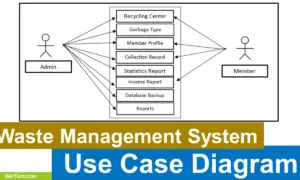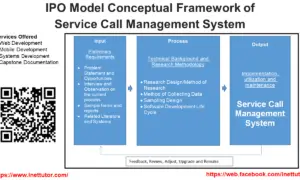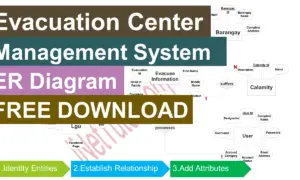Conceptual Framework of IoT-based Sign Language to Text
This post will discuss how to design and prepare a conceptual framework for a capstone project entitled IoT-based Sign Language to Text (Python). The study’s conceptual framework was built using the input, process, and output (IPO) model.
About the Project
Communication is a basic human requirement, although not everyone communicates in the same way. Deaf or hearing-impaired people frequently confront difficulties while attempting to interact with the hearing world. For this group, sign language is an essential mode of communication, and technology has the potential to make it more accessible and inclusive. In this post, we will look at how to use Python to develop an Internet of Things (IoT)-based Sign Language to Text conversion system. Sign language is a visual language that conveys messages using hand gestures, face expressions, and body motions. Sign languages vary by geography, such as American Sign Language (ASL) in the United States and British Sign Language (BSL) in the United Kingdom. While sign language is an efficient way of communication within the deaf community, others who do not understand it may find it difficult.IoT and Python may be used to construct a system that converts sign language movements into text, making it simpler for hearing people to comprehend and communicate with the deaf and hearing-impaired.
Objectives of the Study
- Develop a robust gesture recognition system capable of accurately identifying and distinguishing different sign language gestures.
- Ensure real-time processing and text conversion of sign language gestures, allowing for seamless communication between deaf or hearing-impaired individuals and hearing individuals.
- Display the converted text in a clear and easily accessible manner, making it readable for both hearing and deaf users.
- Implement a feedback mechanism that allows users to correct any misinterpretations or errors in the converted text.
Conceptual Framework Diagram
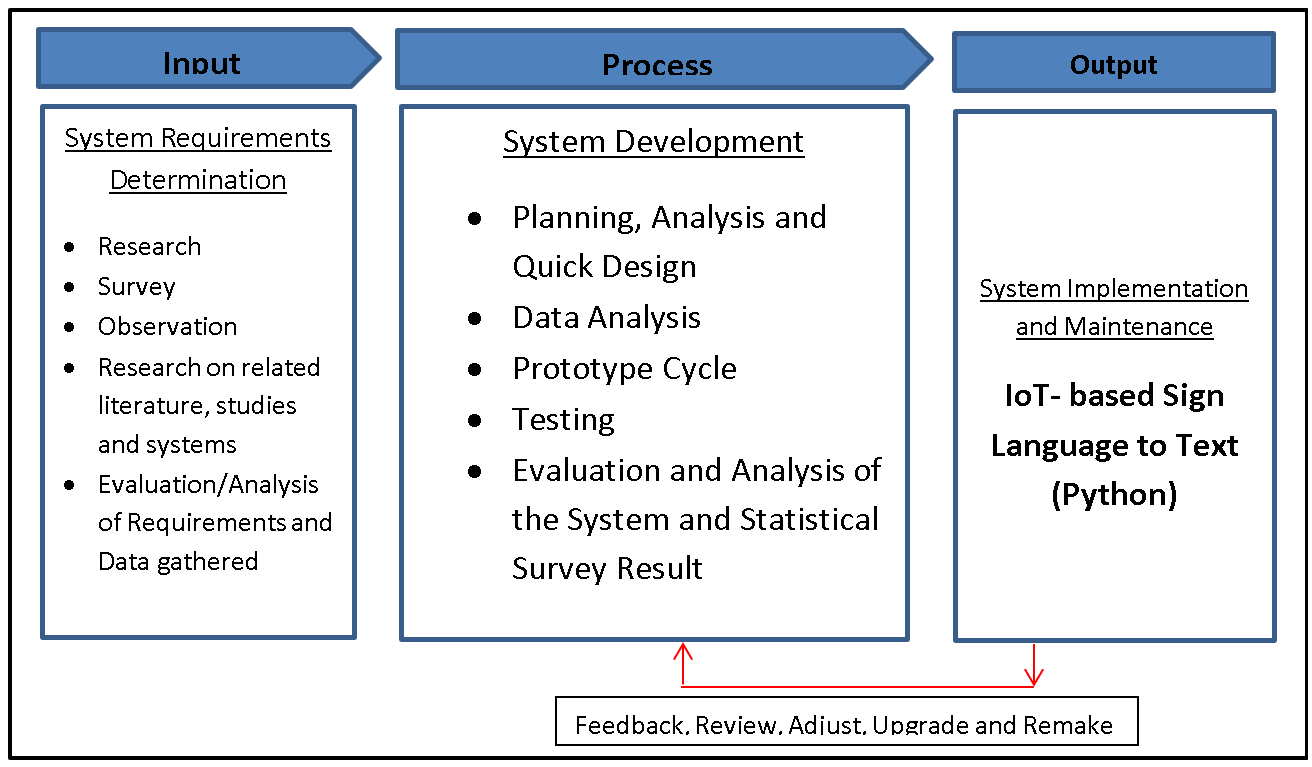
A Conceptual Framework serves as a structured outline or blueprint guiding the development of a project, research study, or system. In the context of a capstone project like the development of an IoT-based Sign Language to Text system in Python, a conceptual framework plays a pivotal role:
- Structuring the Project Scope: It helps define the project’s scope, outlining the objectives, functionalities, and limitations of the Sign Language to Text system. This ensures a clear and well-defined path for the project’s development.
- Guidance for Design and Development: The conceptual framework provides a guiding structure for the design and development process. It helps in determining the key components, such as the choice of sensors, data processing algorithms, and the integration of Python libraries for natural language processing.
- User-Centric Approach: By emphasizing the needs of the end-users, the conceptual framework ensures that the developed system caters to the practical requirements of individuals who use sign language as their primary mode of communication.
- Research Orientation: It directs the focus of the project’s research efforts, aiding in the exploration of relevant sign language recognition techniques, natural language processing algorithms, and Python-based machine learning libraries.
- Ethical Considerations and Impact Analysis: A conceptual framework encourages the consideration of ethical implications related to the use of the technology, ensuring that the system respects the privacy and dignity of the users.
- Scalability and Adaptability: It enables the project to be designed with scalability and adaptability in mind, allowing for future enhancements and adjustments based on the evolving needs of the target users and technological advancements in the field.
Conceptual framework serves as a compass, guiding the development of the IoT-based Sign Language to Text system in Python, ensuring that it remains focused on user needs, research advancements, and ethical considerations, thereby fostering the creation of an effective and user-friendly solution.
Input
The project will begin by evaluating the present process, which will lead to the stage of doing research, survey and observation. The researchers will also need to compile relevant papers and systems to use as a guide for the project’s development. After all such process, the researchers will evaluate and analyze the requirements and data gathered.
Process
The researchers will select and choose the optimum software development life cycle model for the project in this section.
Planning, Analysis and Quick Design
During Analysis and Quick Design, the researchers did a personal interview with the respondents and the chosen client where the study was conducted. The respondents were given the chance to suggest how the system will be designed. After conducting the data gathering, the researchers made an initial design for the proposed system.
Data analysis
Consultation is used to gather requirements from end users and generate ideas. We also distributed a survey questionnaire that was authorized by three experts (IT Expert, English Grammarian, and Researcher). And these questionnaires functioned as our data gathering tool, measuring the performance of the manual system that served as the foundation for the development of our proposed system.
Prototype Cycle
This stage will consist of the researchers’ data being compiled, built, demonstrated, and refined. The researchers create a prototype first, based on the planned design and data tables. The prototype will be shown to the client after it has been built. The researchers demonstrate the system’s operation, the flow of how it operates, and the functions of the system’s features. The next stage is refining, in which the researchers will fine-tune the system based on the client’s extra requirements. Changes to the features flow and functionalities will be made based on the needs.
Testing and Evaluation
This will include the feed backing of the proposed system after it will be implemented and had undergone testing by three Experts. It will also inform the researchers and the developer if there are any bugs, suggestion and if the system’s functionality will work well.
This will discuss the implementation of the proposed system wherein Three (3) Experts will evaluate the proposed system. This will also discuss if the recommended functions and suggestion are met.
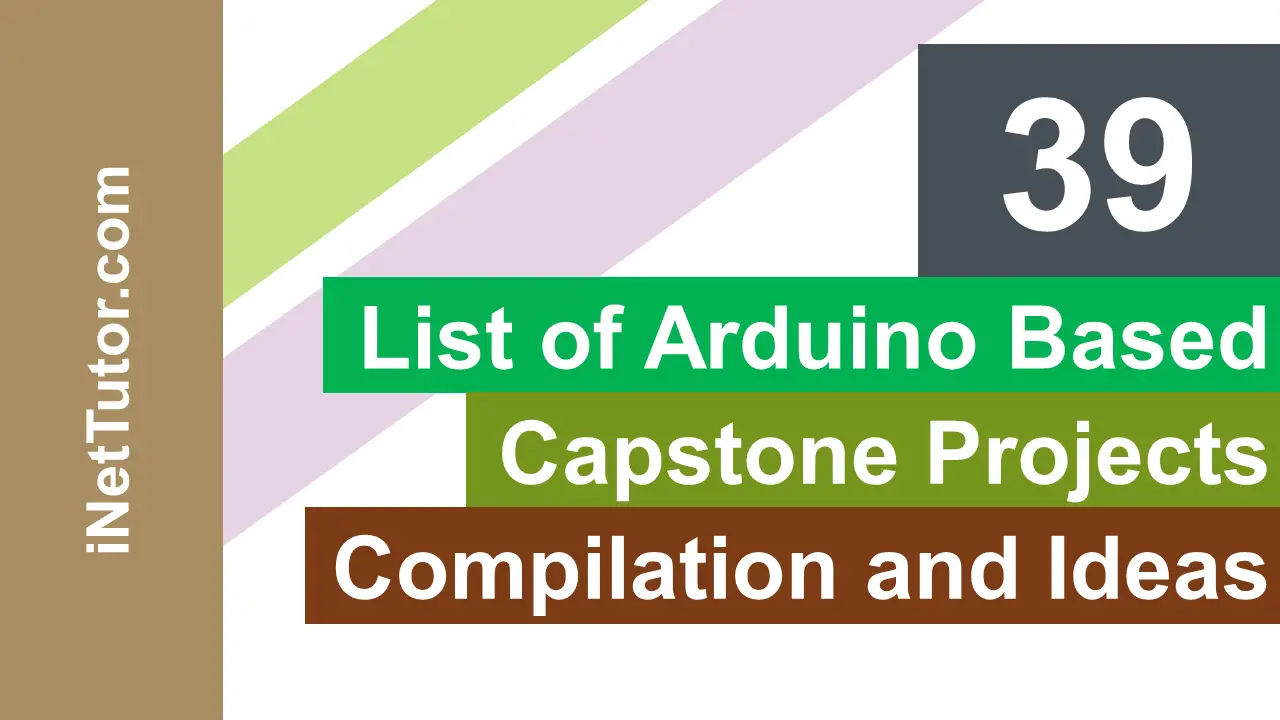
Output
The Output Phase, pivotal in the development of an IoT-based Sign Language to Text system in Python, propels the project from ideation to practical application. System implementation involves the integration of hardware and software components, including sophisticated Python libraries for sign language recognition and natural language processing. Once assembled, the system is tactically installed in real-world environments like educational institutions or community centers where sign language is prevalent. User training sessions ensure effective utilization, offering comprehensive guidance on system operation and interpretation of outputs. Regular maintenance and updates sustain the system’s performance, integrating the latest advancements in sign language recognition and text processing algorithms. Continuous performance evaluation and user feedback incorporation guarantee that the system remains responsive to the community’s evolving needs, fostering inclusive communication and supporting the empowerment of the deaf and hard-of-hearing population.
Summary
The blog post embarks on a comprehensive exploration of the Conceptual Framework using the IPO model for developing an IoT-based Sign Language to Text system in Python. It delves into the Input Phase, elucidating the critical activities involved, such as user requirements analysis, technology assessment, and risk evaluation, laying the groundwork for the project’s success. The Process Phase comes to life, emphasizing the implementation of Python libraries for sign language recognition and natural language processing, driving the development of an effective and user-friendly system. The Output Phase is unveiled, highlighting the practical deployment of the system, user training, and continuous system updates for enhanced performance. Through this comprehensive examination, the blog post sheds light on how the IPO model conceptual framework underpins the development of an innovative solution that fosters inclusivity and communication for the deaf and hard-of-hearing community.
Readers are also interested in:
IOT Garbage Monitoring System using Arduino with Bluetooth Application
Receive Bluetooth Data from Arduino to MIT App Inventor (HC-05/06)
You may visit our Facebook page for more information, inquiries, and comments. Please subscribe also to our YouTube Channel to receive free capstone projects resources and computer programming tutorials.
Hire our team to do the project.
